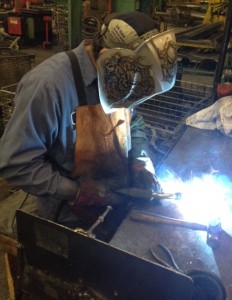Rolled steel shapes, whether used in construction or as component parts of equipment, are often welded together to form rings and cylinders. Different metal fabricators perform different types of welding depending on their expertise and their customers’ requirements.
For example, companies that make cylinders for pressure vessels often have the plate rolling capacity and code welders to fabricate these tanks per the strict specifications of the applicable standards. At times, however, such companies may need to go outside to purchase plate rolling because they need greater capacity, quicker turnaround time, and/or lower costs as compared to doing the work “in house.” Some shops specialize in welding and prefer to subcontract out the plate rolling. A rolling house may be asked to tack-weld the joints and/or bevel the ends. Cylinders can be wrapped with banding wire or “spidered” with cross bracing to help them keep their shape during transportation if they are not welded.

Cylinders and cylinder segments can be welded together through a variety of technologies: MIG welding (Metal Inert Gas), TIG welding (Tungston Inert Gas), track welding and submerged arc welding. Each has its benefits and disadvantages. What is important is that the rolling company determine what its customer’s needs and desires are when it comes to welding.
For example, standard angle rings are usually MIG welded “on the outside only,” i.e. the weld covers the outside of the vertical leg and the non-mating surface of the horizontal leg: the inside vertical leg and the face of the flange are not welded. Unless, of course, the customer specifies “weld all around.”
Rings can also be supplied “OBJ” i.e. open butt joint where there is no weld connecting the ends of the ring. Rings can also be supplied tack welded to hold their form in shipping.
In summary, metal fabricators — both suppliers and customers — need to communicate to determine how best to allocate the work to be done. It’s another version of the make or buy decision often encountered in business.







